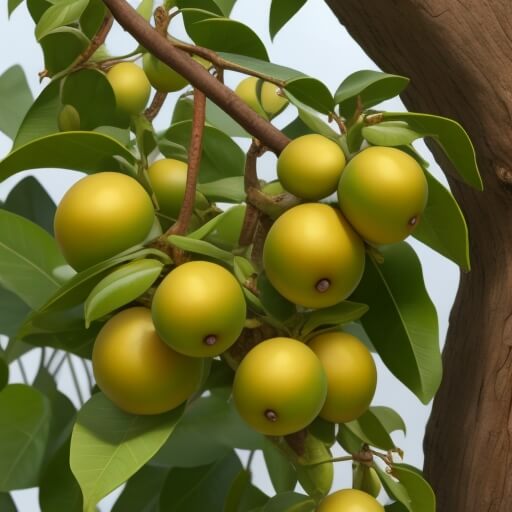
Endangered Plants Of India Project For Class 9th
Introduction:
In the heart of India’s breathtaking landscapes lies a tapestry of biodiversity, a testament to nature’s artistry. Yet, within this mosaic, a symphony of plants faces an uncertain future, on the cusp of fading from existence. Join us on this expedition into the realm of India’s endangered flora, where the urgency of conservation beats like a steady drum.
These botanical treasures have carved their stories across India’s diverse terrain. From the hidden corners of the Western Ghats to the lofty Himalayan peaks, each plant possesses a narrative, an ecological role, and a cultural significance that weaves into the fabric of life itself.
As stewards of this fragile ecosystem, the responsibility falls upon us to comprehend, safeguard, and advocate for these endangered species. In the following pages, we embark on a journey to explore the lives of ten extraordinary plants, their struggles against adversity, their vital roles in their ecosystems, and the pressing need to ensure their survival. Together, we delve into the world of India’s botanical heritage, seeking not just to observe but to champion its preservation.
Rhinacanthus Nasutus

Common Name: Snake Jasmine
Height: Up to 2 meters
Habitat: Thrives in dry deciduous forests and rocky terrains.
Overview: Within the realm of India’s botanical treasures, the Snake Jasmine (Rhinacanthus nasutus) stands as a critical gem teetering on the edge of existence. Renowned for its potent therapeutic properties, this indigenous plant holds a revered place in Ayurvedic medicine, with its leaves, roots, and bark employed to combat various maladies.
Yet, Snake Jasmine’s survival is threatened by habitat loss. The relentless encroachment of agriculture and urban sprawl into its dry deciduous forest and rocky enclaves is a pressing concern. Coupled with this, the demand for its medicinal attributes has led to rampant over-harvesting. The imperative now is clear—conservation efforts must rally to safeguard this invaluable plant, a custodian of India’s traditional healthcare systems.
Cycas Circinalis

Common Name: Queen Sago
Height: Up to 5 meters
Habitat: Indigenous to evergreen forests.
Overview: In the heart of the Western Ghats, the Queen Sago (Cycas circinalis) reigns as a timeless sentinel. Resembling a palm, it boasts a sturdy trunk crowned with frond-like leaves, making it a favorite in horticulture.
Yet, this regal species faces a grave threat—habitat destruction and illicit harvesting. Rampant deforestation in the Western Ghats gnaws at its natural habitat, while unscrupulous collectors uproot these plants from the wild. Urgent conservation measures are imperative to ensure the fate of this extraordinary plant, a vital strand in India’s rich biodiversity tapestry.
Nepenthes Khasiana

Common Name: Khasi Pitcher Plant
Height: Vines can grow several meters in length.
Habitat: Thrives in the hilly areas of Meghalaya, India.
Overview: In the unique ecosystem of Meghalaya’s hills, the Khasi Pitcher Plant (Nepenthes khasiana) thrives as a botanical marvel. Its carnivorous nature, utilizing pitcher-shaped leaves to trap and digest insects, sets it apart, aiding its survival in nutrient-poor soils.
However, this intriguing plant now faces critical endangerment, primarily due to habitat destruction. As forests yield to agriculture and development, the delicate balance of this ecosystem is disrupted. Illicit collection for horticultural purposes further compounds the issue. Conservation efforts must prioritize the protection of this fascinating and ecologically vital species.
Syzygium Travancoricum

Common Name: Travancore Rosewater Tree
Height: Can grow up to 25 meters.
Habitat: Native to the Western Ghats, it thrives in evergreen forests.
Overview: Within the lush evergreen forests of the Western Ghats stands the majestic Travancore Rosewater Tree (Syzygium travancoricum). Its fragrant flowers, coveted for their aromatic properties, find their way into perfumes, cosmetics, and traditional practices.
Yet, this remarkable tree faces imminent peril due to habitat loss. The relentless clearing of pristine Western Ghats forests for agriculture and development threatens its natural habitat. Simultaneously, the illegal harvesting of its fragrant blooms exacerbates its endangered status. Conservation measures become the guardians of this botanical treasure.
Diospyros Melanoxylon

Common Name: Indian Ebony
Height: Typically reaches 10 to 20 meters.
Habitat: Found in various forest types, especially in dry deciduous and moist deciduous forests.
Overview: The Indian Ebony (Diospyros melanoxylon) is a remarkable tree, celebrated for its dark, dense hardwood. Its wood, prized for its durability, crafts fine furniture, musical instruments, and intricate woodwork.
However, the Indian Ebony now stands endangered, a victim of extensive logging for its valuable timber. As the demand for this hardwood persists, the forests that house these trees diminish. Conservation efforts are the guardians of its sustainable future, ensuring the legacy of this extraordinary species in India’s intricate web of biodiversity.
Swertia Chirata

Common Name: Chirata
Height: Grows up to 30-80 cm tall.
Habitat: Found in temperate and alpine regions of the Himalayas.
Overview: Chirata (Swertia chirata) is a petite yet potent medicinal herb indigenous to the temperate and alpine realms of the Himalayas. Revered for its intensely bitter taste, Chirata has played a crucial role in traditional medicine systems, addressing a spectrum of health concerns, from fevers to digestive disorders and skin afflictions.
However, the relentless overharvesting of Chirata for its medicinal virtues and habitat deterioration have driven it perilously close to the abyss of extinction. This herb, a cornerstone of many traditional remedies, has been subjected to unsustainable collection practices. As its habitat bears the weight of increased human activities, the call for urgent conservation resonates loud and clear, for Chirata is a treasure deserving of preservation.
Phyllanthus Fraternus

Common Name: Lesser Yellow Nutsedge
Height: Typically 20-30 cm tall.
Habitat: Found in various soil types, often in wetlands.
Overview: The Lesser Yellow Nutsedge (Phyllanthus fraternus) may not dazzle with its visual allure, but its significance in native ecosystems cannot be understated. This modest herbaceous plant finds its home in wetlands and diverse soil types, contributing to the intricate web of biodiversity.
Yet, the relentless march of urbanization and agriculture into wetlands and natural habitats jeopardizes the very existence of Lesser Yellow Nutsedge. Habitat degradation and altered water flow patterns further threaten its survival. Conservation efforts must extend their embrace to protect not only the charismatic species but also the understated, ecologically invaluable ones like Lesser Yellow Nutsedge.
Tacca Leontopetaloides

Common Name: Polynesian Arrowroot
Height: Grows up to 40 cm.
Habitat: Thrives in tropical and subtropical regions.
Overview: Polynesian Arrowroot (Tacca leontopetaloides) is a botanical gem celebrated for its starchy rhizomes. It finds its roots in tropical and subtropical regions, where indigenous communities have historically harnessed it as a source of sustenance.
Regrettably, the habitat of Polynesian Arrowroot stands threatened by deforestation and land loss, especially in regions witnessing intensified agriculture and development. Additionally, the plant is frequently harvested for its edible roots, further pressing its endangered status. Conservation endeavors must rise to protect this critical food source for certain regions.
Rauvolfia Serpentina

Common Name: Indian Snakeroot
Height: Grows up to 1-1.5 meters.
Habitat: Native to the Indian subcontinent, often found in moist, shady areas.
Overview: Indian Snakeroot (Rauvolfia serpentina) emerges as a valuable medicinal asset deeply embedded in traditional healing practices. Its alkaloids have been harnessed to combat an array of conditions, from hypertension to insomnia and mental disorders.
Despite its medicinal prominence, Indian Snakeroot grapples with the specter of overexploitation. Its roots, bark, and other parts are relentlessly harvested for their medicinal compounds, often reaching unsustainable levels. Concurrently, habitat loss and degradation stemming from land development further compound its endangered status. Conservation initiatives should aim to endorse sustainable harvesting practices and safeguard its native sanctuaries.
Ceropegia Fantastica

Common Name: Fantastic Ceropegia
Height: Typically 30-40 cm tall.
Habitat: Found in rocky terrain and scrubland.
Overview: The Fantastic Ceropegia (Ceropegia fantastica) is an entrancing botanical wonder celebrated for its distinct tubular flowers. Resilient and adapted to rocky terrains and scrublands, this succulent-like species thrives.
Nonetheless, the habitat of Fantastic Ceropegia faces relentless threats from human activities like mining, construction, and land conversion. Additionally, it is often plucked for ornamental purposes, further pushing it towards endangerment. Conservation endeavors become the guardians of this captivating plant and its role within its native ecosystem.
Certificate
This is to certify that I, [Your Name] of XYZ School, have completed the project titled “Preservation of Endangered Indian Plant Species” with dedication and commitment.
Through this project, I have actively raised awareness about the critical status of several endangered plant species native to India and have emphasized the importance of conservation efforts to protect these invaluable botanical treasures.
I have successfully highlighted ten endangered plant species, shedding light on their ecological significance, cultural relevance, and the imminent threats they face. My meticulous research and eloquent articulation have effectively conveyed the urgency of preserving these plants to a wider audience.
This certificate is hereby awarded to recognize my outstanding efforts and contributions towards the conservation of India’s botanical heritage. It is a testament to my commitment to environmental stewardship and my dedication to safeguarding the delicate balance of our ecosystems.
Conclusion
In the vast and intricate tapestry of India’s biodiversity, I embarked on a journey to uncover the stories of ten remarkable but endangered plant species. These botanical treasures, from the Himalayan heights to the verdant Western Ghats, each have a role to play in the symphony of life on our planet.
Through my exploration, I unveiled the myriad challenges that these plants face, from habitat loss to overexploitation. I learned that their survival is not just a matter of scientific importance but also a testament to our cultural heritage and the delicate balance of ecosystems they inhabit.
This project aimed to shine a light on the urgent need for conservation efforts. These efforts are not only about protecting individual plant species but about preserving the intricate web of life that sustains us all. It is a call to action, a reminder that as stewards of the environment, I hold the power to make a difference.
As I conclude this journey, let us carry forward the knowledge gained and the urgency felt. Let us advocate for the preservation of India’s botanical heritage and work together to ensure that these endangered plants continue to thrive, not just for our generation but for generations to come.
Bibliography:
- “Flora of India” by S.K. Jain and R.R. Rao
- “Red Data Book of Indian Plants” by N.P. Singh and K. Karthikeyan
- “Conservation of Threatened Plants in India” by M. Sanjappa
- Interviews with local botanists and experts on endangered plants
- “Forest and Wildlife Laws of India” by A. Chakravarty
Certificate of Completion
[Student’s Name][Class/Grade Level]This is to certify that I, [Student’s Name], a [Class/Grade Level] student, have successfully completed the project on “Endangered Plants Of India ” The project explores the fundamental principles and key aspects of the chosen topic, providing a comprehensive understanding of its significance and implications.
In this project, I delved into in-depth research and analysis, investigating various facets and relevant theories related to the chosen topic. I demonstrated dedication, diligence, and a high level of sincerity throughout the project’s completion.
Key Achievements:
Thoroughly researched and analyzed Endangered Plants Of India Project For Class 9th.
Examined the historical background and evolution of the subject matter.
Explored the contributions of notable figures in the field.
Investigated the key theories and principles associated with the topic.
Discussed practical applications and real-world implications.
Considered critical viewpoints and alternative theories, fostering a well-rounded understanding.
This project has significantly enhanced my knowledge and critical thinking skills in the chosen field of study. It reflects my commitment to academic excellence and the pursuit of knowledge.
Date: [Date of Completion]Signature: [Your Signature] [School/Institution Name][Teacher’s/Examiner’s Name and Signature]
In order to download the PDF, You must follow on Youtube. Once done, Click on Submit
Follow On YoutubeSubscribed? Click on Confirm
Download Endangered Plants Of India Project For Class 9th PDF






